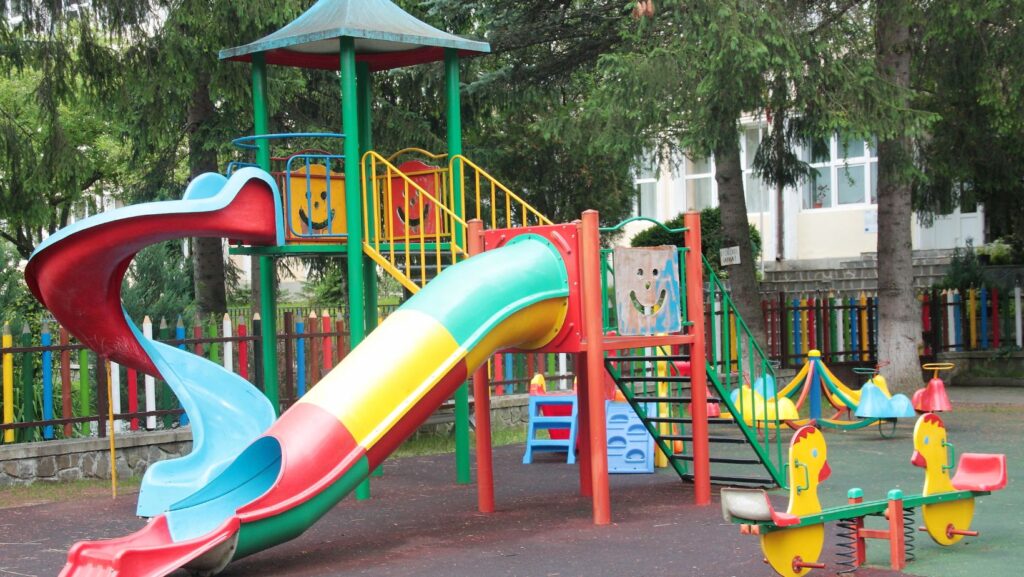Outdoor play is crucial to a child’s development, offering them the chance to explore, exercise, and interact with their environment. Public parks, playgrounds, and other outdoor spaces are ideal for these adventures. However, ensuring your child’s safety while having fun requires careful attention and planning. This guide explores practical tips for parents to keep their children safe during outdoor playtime in public spaces, helping you create enjoyable and secure adventures.
Choose the Right Play Area
Before heading out, assessing whether the play area is safe and age-appropriate for your child is essential. Look for safety features such as rubber or wood chip ground covering, which helps cushion falls. Ensure the play equipment is in good condition, with no visible signs of wear, rust, or sharp edges that could pose a danger. Many community parks and playgrounds are divided into different zones for toddlers, preschoolers, and older children. These designated areas ensure that children are using equipment designed for their developmental stage.
Check for signs that indicate which areas are appropriate for your child’s age group. If you’re heading out with children of varying ages or abilities, opt for parks with accessible features like ramps, sensory play equipment, and inclusive designs. This allows all kids to enjoy the space safely.
Supervision is Key
While public spaces are designed for children to have fun, they can still pose risks. Accidents can happen quickly, so active supervision is essential during outdoor play. While it can be tempting to use outdoor playtime to relax and catch up on emails or social media, active supervision is crucial to preventing accidents. Stay close to your child and watch their interactions with equipment and other children.

Encourage your child to play safely by teaching them about sharing equipment, taking turns, and being mindful of other children. Setting clear rules—like not pushing on the swings or sliding down headfirst—helps create a safer play environment for everyone. While it’s understandable that parents may want to multitask, avoiding distractions like phone calls or reading ensures you’re fully present.
Prepare for the Weather
Whether it’s a sunny day or a crisp fall afternoon, the weather significantly affects your child’s safety during outdoor play. Being prepared for changing weather conditions helps protect your child from risks like sunburn, dehydration, or cold-related issues. Light and breathable clothing with a hat and sunglasses can protect them from the sun during summer. In colder weather, layering clothes will help keep them warm while allowing them to move freely.
Prolonged exposure to the sun’s UV rays can lead to sunburn, which can happen quickly when children play outdoors for extended periods. Consider parks with shaded areas or bring a sun umbrella for added protection. Outdoor playtime, especially in warm weather, can lead to dehydration. Pack a water bottle for your child and encourage them to take regular sips, even if they don’t feel thirsty. Being mindful of the weather ensures that your child remains comfortable and safe during outdoor adventures, regardless of season.
Pack the Essentials for a Safe Outing
Packing a few essential items before heading to the playground or park can go a long way toward ensuring your child’s safety during playtime. Carry a basic first-aid kit with bandages, antiseptic wipes, and tweezers.

While most injuries at the park are minor, having supplies on hand allows you to address cuts, scrapes, or splinters quickly. Public spaces can harbor germs, especially on playground equipment. Use hand sanitizer or wipes to clean your child’s hands before snacks or after playing. Having the right supplies on hand can make a difference in managing minor accidents and keeping your child safe during outdoor playtime.
As a parent, your role in ensuring their safety involves choosing appropriate play areas, supervising their activities, preparing for the weather, and packing essential supplies. By following these practical tips, you can create a fun and secure environment for your child’s outdoor playtime, allowing them to explore and grow while you have peace of mind.
